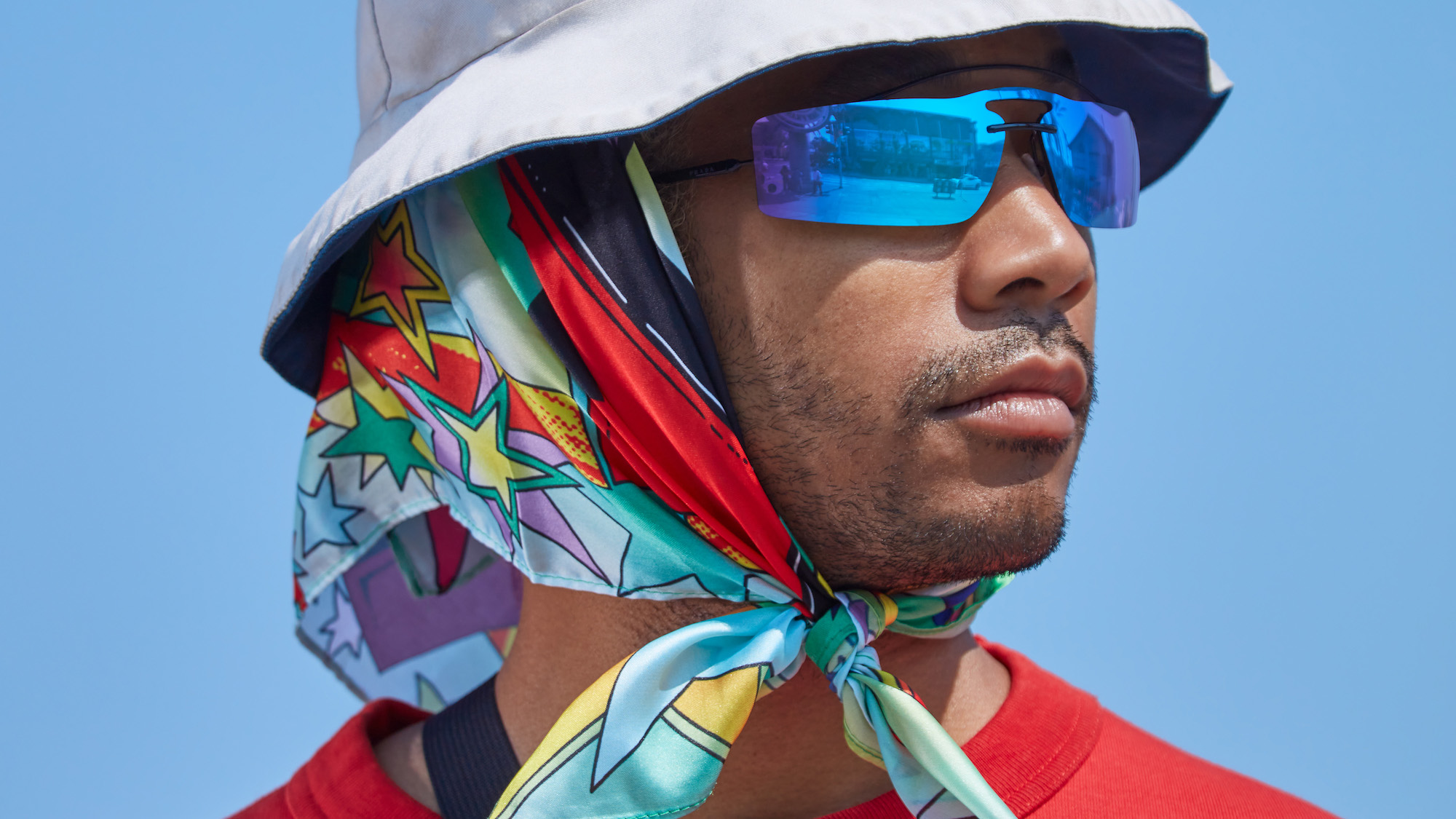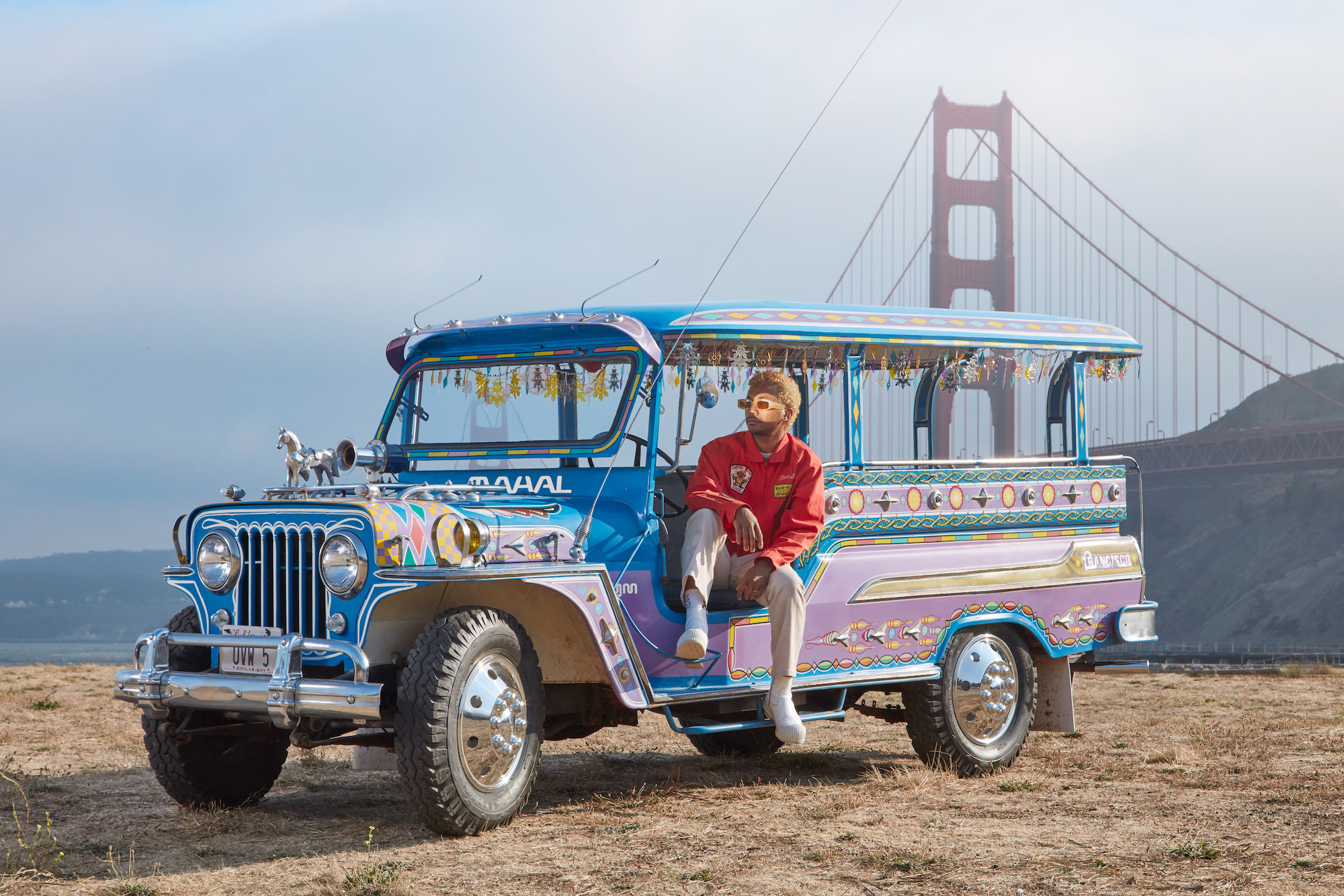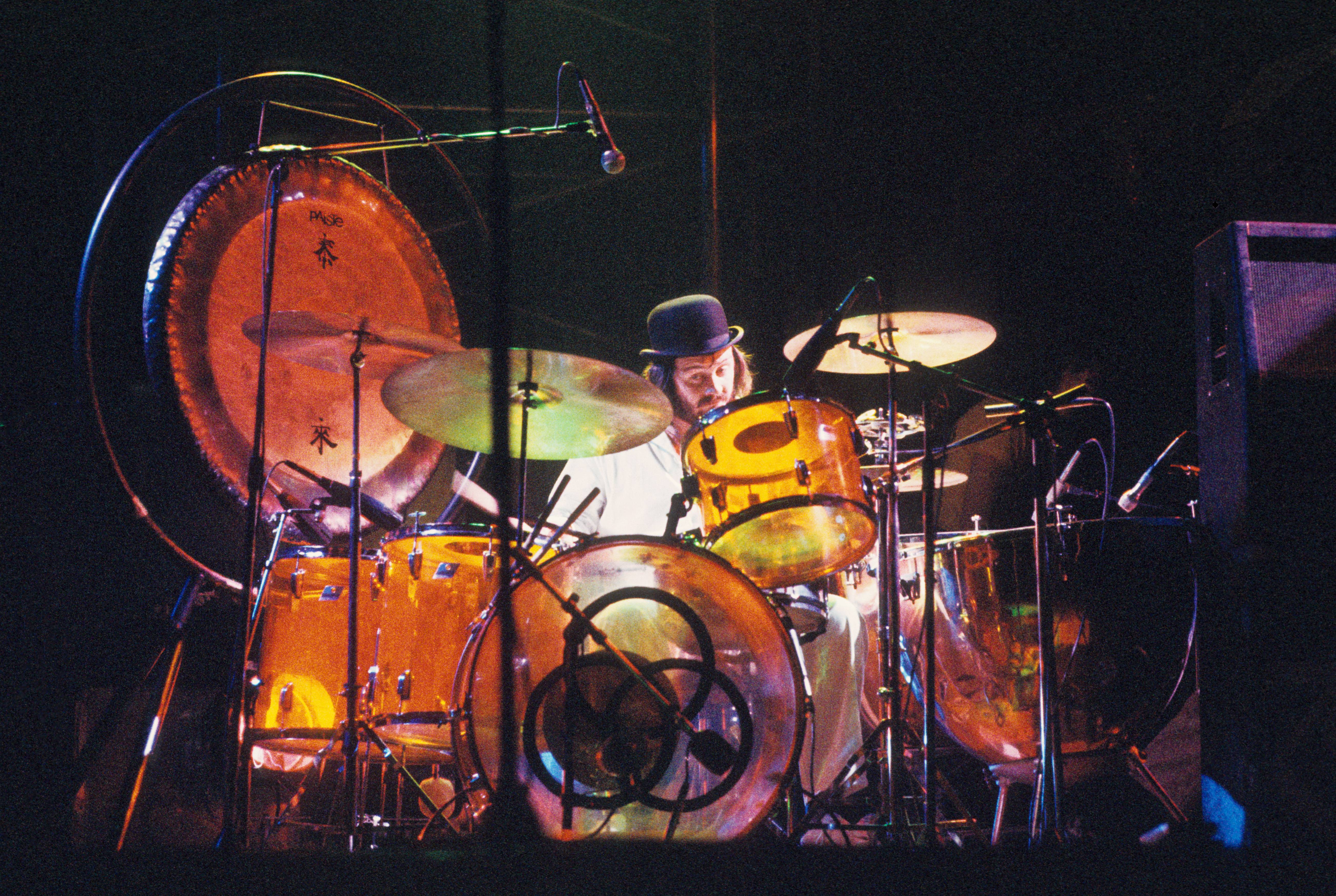Toro y Moi: "I'm not much of a plugin guy. I just use hardware!"
Chaz Bear on staying true to an authentically '70s sound in recording the vibe-heavy psych-rock of his new album, Mahal

Toro y Moi emerged in 2010 as a poster child for that most Californian of microgenres: chillwave. Recording dreamy, lo-fi and sample-happy electronica bolstered by buoyant vocals, Chaz Bear spearheaded a sound that was one of the first to live and die by the hand of the internet, more specifically the nexus of blogs, forums and file-sharing sites that, before the advent of streaming, wielded an unprecedented influence on the average music fan’s daily discoveries.
Almost as quickly as it appeared, chillwave receded into an appropriately hazy distance, but Bear surely paid no mind: he was already on to new things. Throughout the remainder of the decade, he experimented with vibe-laden R&B, discofied synth-pop, and kaleidoscopic psych-rock, and it’s the latter sound that he explores further on his new album, Mahal.
The scene that he came up in may have been short-lived, but these days, Bear’s determined to make music that’s timeless. “That's the only MO throughout the project”, he says of the new record. “Let's really sink this thing into a timeless place.”

The album’s called MAHAL. What’s the meaning behind the title?
“Mahal is a Filipino word for love. It also doubles as the term for expensive. So yeah, that's the surface level thing. Overall, I wanted to go with an album title that tied in broader themes, you know, dealing with where we are in the world and in life. So I felt like you know what, let's just call it love. We'll just put that out there and see what happens. But if you listen to the record, it's deeper than just love songs. It's introspective. So there's a little bit of self-care in there as well.”
Do you feel like this album is a new direction for you sonically, or more of a refinement of the sound you’ve been building up to this point?
“It's a little bit of both. With Toro, there's always this psych-rock world and then there's this R&B/electronic thing going on. I think fans are expecting something a little bit close to that. I would say this is more the psych-rock world, but I think the new elements come in where I try to do weirder, more raw type of things, and guitar solos. It's more Beatles-y and less Big Star.”
Get the MusicRadar Newsletter
Want all the hottest music and gear news, reviews, deals, features and more, direct to your inbox? Sign up here.
We’re told that you recorded this album in your Oakland studio. How long have you been working in that space?
“I've been in this one space since 2014. It was a weird transition in my life, where I moved to Portland, Oregon, and around the same time, about six months later, my friend grandfathered me the space. I was torn in a way until I moved back to The Bay in 2016, and that's when things really took shape. But yeah, I got that space and started working on this record immediately around 2017.
I wanted to stay true to the era that I wanted to reference and make decisions that only made sense at that time
“A lot of these tracks, I've sat with for a while, marinated with them and done the time test with them. I think I was fortunate that I was working on an album that's conceptually ‘70s. Because it's free of all of the constraints of modern music, so I don't have to worry about trends, and stuff like that.”
Could you pick out one or two pieces of equipment that were fundamental to the sound of the new album?
“Honestly, straight up, I think it was the drum kit. I bought this replica Bonham kit that was like Orange Vistalite. Just letting that big kick drum boom, I think it's like a 26-inch or something. It's silly. So I think that was the biggest thing. Other than that, even with electronic music, I'm not much of a plugin guy. I just use hardware. For my vocals, I got a better Neumann mic, and I got an API channel strip and stuff like that. So I got to step up my vocal processing, which was kind of coolor me. I never really cared too much about that stuff.”

Are you still swapping and changing things in your studio space? Or do you tend to stick with what you’ve got once you’ve found the right set-up?
“I'm really happy. Actually, just last year, I moved out of this warehouse that was a multi-faceted art space. And I moved into a smaller location that's strictly just recording space, there's not other artists and stuff, like the other place. I think this new space is exactly where I want it to be.
I was just getting into live tracking with multiple people in the room. As a producer, that's when you’re like, oh my god, we're fucking sailing!
”It's right in between a project studio and a professional studio. It's not sound treated, but my neighbours don't care about noise. So I was just like, we’ll skip that. I don't want much from a studio. I like the homespun vibe. All I did was put some Baffles on the wall. I still have the same Focusrite Scarlett 18i20, or whatever it is. I have my 10 inputs, and I just keep it at that.”
Did you experiment with any new techniques or new equipment on this record?
“I think something that's fresh for Toro fans - I've done it before, but for Toro specifically - tracking live, drums, bass, guitar, that was fresh for me. Even with What For?, my fourth record, I never did everything all together, except for the last song. And that was the last track that sort of led into this record, actually. I was just getting into live tracking with multiple people in the room. As an engineer or producer, that's when you’re like, oh my god, we're fucking sailing, you know? So that was probably the best part, honestly, just getting all those people together in a room.”
Could you pick out a particular sound or part on the new record that you love and give us some detail on the creative process behind it?
“The Medium is one of the tracks that really stands out to me. It starts off with these keyboard sounds, it’s very Yes-sounding. That riff was just living in my head for about five years. It wasn't until last year, quarantine really whipped me into shape and just got me to finish the project. That riff, I felt like it was so iconic and Yes-like, it had some progginess to it. I’ve never dabbled in referencing Yes, or Rush, or any of that before. It's probably my favourite track.”
What else were you listening to while you were writing the album? Was prog a big influence?
“Not too much prog. Definitely King Crimson, Yes, ‘70s stuff mainly. Even seeing Todd Rundgren play. I got to see him in concert earlier this year. It informed me and gave me some insight on how to make music that ages well. It's interesting to hear how Todd does it live now because it works so well, it just ages well. When you're working with real instruments, it doesn't have all these constraints.
That's the only MO throughout the project, like: let's really sink this thing into a timeless place
“It's funny, this record for me is like a sister record to What For?, so it's not a fresh new record. It's the next chapter of this psych Toro world. In that writing process, for What For?, I went to see King Crimson play, and I was so into how it sounded, specifically at their concerts. Because they don't have amps, and everything is just DI’d. I think they even had little drum shields on the cymbals. It's such a weird experience, because there's no acoustics coming from the stage. It's just from the speakers.
“That informed me as well, to see these prog musicians now, and how they're incorporating technology into their setups. It made me realise that this isn't just about acoustics and traditional instruments, it's also about pushing technology, and seeing where it can go. So I was taking that, and applying it to my DAW, for example. Figuring out what to loop, when to loop stuff. I wanted to stay true to the era that I wanted to reference and make decisions that only made sense at that time.”
You mentioned in a previous interview that ambient music was a real influence on Outer Peace. Did that come into play with this record as well?
“A lotta ambient as well. Usually I make playlists before I even dive into a project, I’d have to dig up my playlists. For this record I was into Admas, the Ethiopian jazz group. A lot of McCartney and Wings, shit like that. Bill Evans, where the cadence of the vocals are a little bit softer, like Blossom Dearie or something like that. I really wanted the tone of my voice to reflect where we are in time. I don't want to be too in your face and too pop-star about it, but I wanted it to be like a diary entry for this record. What else is there? There’s this really sick French group, Zeugma, with a song called Le Magicien.”
What DAW are you using?
“I’ve used Reason since I moved to Mac. I started on a Dell laptop with Fruity Loops. A lot of beatmakers start out on that. Actually, my first DAW was a digital nine-track from Boss. That’s what I was used to. I’m used to hardware. I never really understood Ableton, still don’t really feel like it’s my strength. I do get jealous sometimes where I hear people working, and I’m like: ‘how the fuck did you do that?’”
What is it you like about Reason?
“It's very much meant for the hardware-minded producer or engineer. There's no tricks to it, you can flip it around and see the wires. If you want to side-chain this thing, you literally just take the wire and do that. I appreciate that perspective. I like how it's not going too far into all of the possibilities that a computer program can be. It gives you those constraints. I think that's positive.”
There’s a fair few collaborations on the new album. How did these come about and what was your thinking behind the artists you’ve chosen to work with on the record?
“Again, I wanted to really channel a world that's very much ‘70s. I don't want to keep saying that, but the artists I hit up - The Mattson 2, Sofie Royer, Unknown Mortal Orchestra - all of those artists really understand timeless music. And they understand the same concept of making decisions that were valid at that time, and not just all of a sudden referencing a Drake song, or something. That's the only MO throughout the project, like: let's really sink this thing into a timeless place.”
Your music has explored a really broad palette of different styles. How do you keep things sounding recognisably Toro y Moi?
“Man, I think that all the time: ‘is this Toro, or is this a new project?’ For me, it really becomes Toro once I start singing on it. Then I can actually hear it. That’s the ultimate factor. If I can hear myself singing on it, there’s a good chance I could make it a Toro track.”
You’ve been releasing under this alias for over a decade now and writing music for much longer. What’s been the biggest transformation in the way you approach music-making over that time?
“Totally, I think it's still happening. Every record is a learning experience, but I think just letting go of the project more, letting go of the music and the idea of Toro with each record is the biggest thing I can take from all of this. The first couple of records I mixed and recorded, but it's getting to be such a big machine at this point where there's so many moving pieces, that I have to just let go and get someone else to engineer it, get someone else to mix it, get someone else to play drums, whatever. To save time and save energy and give me the capacity to actually envision the final thing.
Taking what I've learned from painting and applying it in a similar way to the sonics of a record, that’s been a learning experience
“When I first started, I never understood that. I'm like, ‘why do they have 20 guys in this studio?’ or ‘why are there like ten people mixing this record?’ At that stage, I was coming at it from a financial thing, I couldn’t afford to do that. But the biggest thing I learned was that if you pay for it upfront, or early in your career, it will pay off if you're doing everything with intention. I wouldn't just dole out jobs just because you're lazy, but yeah, if you need help, definitely get it. Get someone who's actually good at drums to play the drums! It’s that kind of thing where I'm just like: I can recognise my capacity now, so I’m not going to try to play this guitar solo. [laughs]”
Music aside, what other things inspire you creatively?
“I get a lot of outdoor time, I have two dogs. So I just walk those guys and get some trails in and clear my head out. I run an art studio too. It’s not a profitable business or anything, but it's interesting to run an art studio, and I feel like it will pay off in time. It’s my baby, more than my label. Company Records is a subsidiary of Carpark, and it's kind of just me art directing things. But the Company studio, that's where all of my other free time goes, to my visual art practice, working on graphic design and painting.
“I like to use that visual side of my brain. I feel like it pays off. One thing I noticed with painting, is you think in similar ways to music: what era do I want to reference? Who do I want to talk to with this painting? Do I want to talk to an older generation or a younger crowd? Taking what I've learned from painting and applying it in a similar way to the sonics of a record, that’s the best learning experience. I’d never thought about making decisions that they would make at a particular time, I would just get lost in the editing. Because with a DAW, you can get so lost in the editing.”
You write and produce for other artists alongside your solo work. Who have you been working with recently?
“I mentioned Company Records, that's still a passion project of mine. So I work with the artists on that label, they're slowly growing. I just produced a record for a band called Tanukichan, they're more of a shoegaze twee-pop band. Twee, fuzzy Smashing Pumpkins vibes. It's cool.
“Another record I just produced was with Elijah Kessler. Rapper, white kid from Santa Monica, lives in Miami. He’s got a really interesting sound. He made me appreciate white-guy rappers in a new way. It’s a hard balance to be a white rapper. [laughs] It’s fun, honestly, to hear something that’s like - wait a second, this isn’t throwing me off. He’s really good.”
Toro Y Moi’s Mahal is out now on Dead Oceans.



I'm MusicRadar's Tech Editor, working across everything from product news and gear-focused features to artist interviews and tech tutorials. I love electronic music and I'm perpetually fascinated by the tools we use to make it. When I'm not behind my laptop keyboard, you'll probably find me behind a MIDI keyboard, carefully crafting the beginnings of another project that I'll ultimately abandon to the creative graveyard that is my overstuffed hard drive.
“The included sample content is not only unique but sonically amazing, as it always was”: Spitfire Audio BBC Radiophonic Workshop review
“We were able to fire up a bass sound that was indistinguishable from the flavour of New Order’s Blue Monday in seconds”: EastWest Sounds Iconic review









